The Herman Miller and Geiger showrooms were among the most buzzed about spaces at NeoCon 2015. Here, go behind the scenes with our SmithGroupJJR correspondents for images and exclusive insights from Kimberly Oliver, Herman Miller’s senior manager for communications and media.
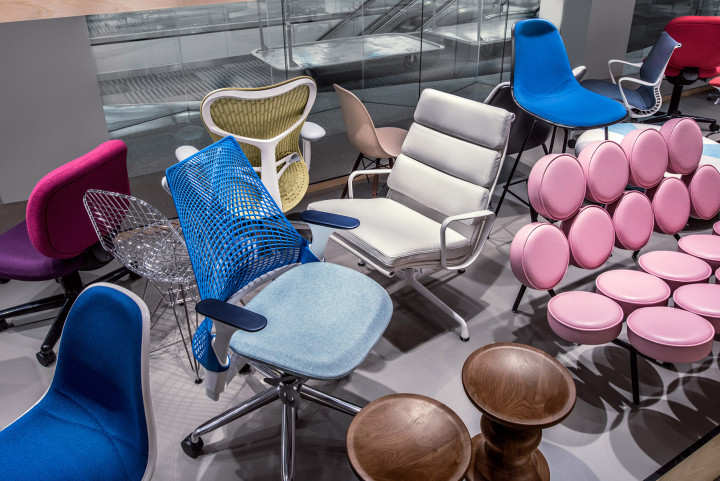
This year at NeoCon, Herman Miller showcased real world applications of their Living Office settings, highlighting a variety of workplace solutions based on actual customer examples. To kick off our tour, we met Kimberly Oliver, Herman Miller’s senior manager for communications and media, at the front of the showroom by the “seated history” gallery of their most iconic chairs. Oliver then gave us a guided tour of both showrooms, filling us in on the inspiration and research behind each of the Living Office settings. Each vignette conveyed a story of various work environments, and demonstrated how Herman Miller has thoughtfully designed their new product lines to help optimize productivity in the workplace.
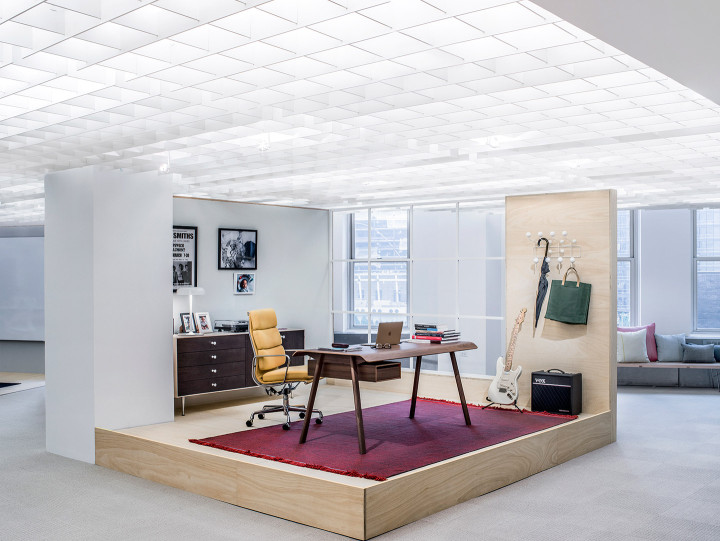
The concept behind Living Office is to demonstrate how a built environment can actually support productivity by synchronizing furnishings, surroundings, tools, and technology. These real world applications provide a higher performance workplace to a variety of organizations. Herman Miller showcased a wide range of office types, including a small home office, as well as solutions for larger workplace settings, such as a financial services company and space for a magazine’s creative team.
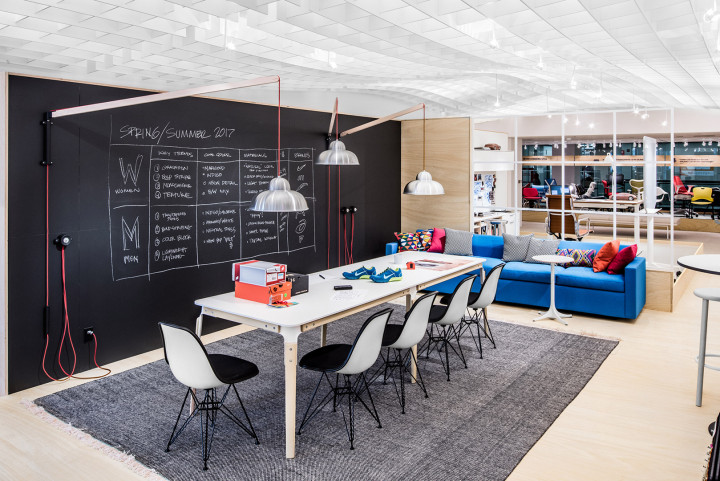
One of our favorite Living Office solutions was Clubhouse, a working neighborhood concept for a team assigned to a long-term, collaborative project. Herman Miller designers created the Clubhouse vignette to support a magazine’s creative team, and we thought the flexibility and efficiency within the space was a huge success. The Metaform Portfolio, shown below as part of Clubhouse, is a lightweight, flexible panel system that can be used for storage, display, or simply to create a sense of place. These panels are easy to assemble — no tools required — and with ample pin up space for progress work, this system is an ideal solution to define a dedicated zone for a creative team to take ownership as they are working on a project.

The Hive setting demonstrates how a fast-paced financial services team might work in close proximity to one another, allowing them to more easily connect and collaborate. Individual work is accomplished at height-adjustable shared benches — the Renew Link system — to provide both privacy and opportunities for collaboration. Renew Link is one of the many products Herman Miller has introduced that promotes individual choice in a shared work environment.

And to solve the age-old problem of awkward eye contact with colleagues, Herman Miller has slightly canted each work surface, angling it so that whether you’re sitting or standing, you never have to meet eyes with the colleague directly across — unless, of course, that’s helpful for collaboration. Practically speaking, Oliver said that statistics show it takes roughly 20 minutes for a worker to refocus after they have been distracted. Something as simple as angling work surfaces to avoid eye contact minimizes these minor interruptions and therefore increases overall productivity. We also loved the exposed edge detail of these work surfaces — a nice touch that adds a little character to the space.

A trend we saw across the board at NeoCon, but perfected by Herman Miller, was the use of a linear workbase for benching solutions. The Locale System is anchored along a linear, low workbase to create unifying core within each neighborhood. It provides flexibility for teams as it can be utilized to support spaces for head-down work, collaborative work, or storage. Locale’s work surface is height-adjustable and slightly curved at all sides creating a sense of openness, and also fosters invited interaction from the user.
Herman Miller’s approach to technology integration is based on change and adaptability, and is thoughtfully integrated into conferencing scenarios such as Exclave. This solution is ideal for teleconferencing and collaboration. The tear-drop shaped conference table is actually at standing height with monitors at eye level to foster equal interaction rather than a focus on a single person giving a presentation.

After making our way through the Herman Miller showroom, we headed over to see Geiger’s take on the latest workspace solutions. Geiger also achieved thoughtful and purposeful solutions in their new product lines through attention to detail and, as always, premium design quality. By celebrating elegance in material and craft, Geiger’s new products are truly a work of art.
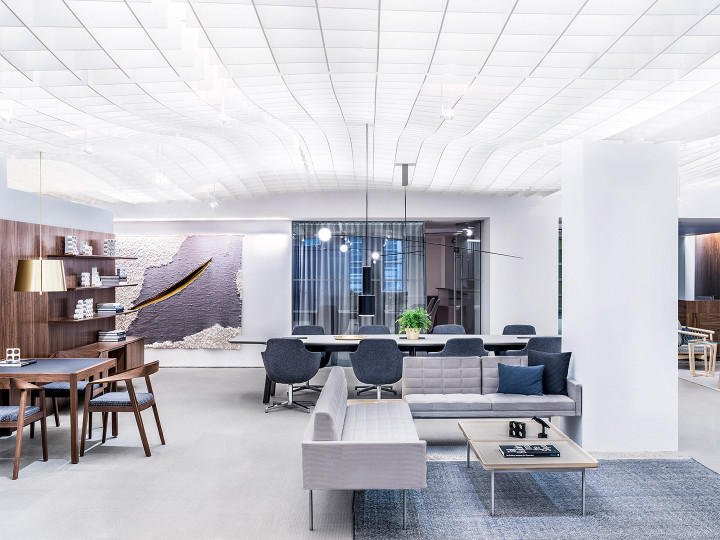
The Construct line is sophisticated workplace system that is developed to meet the needs of a modern workplace culture. Geiger demonstrates refinement in wire management and storage details in this collection, making it stand out among the competition.
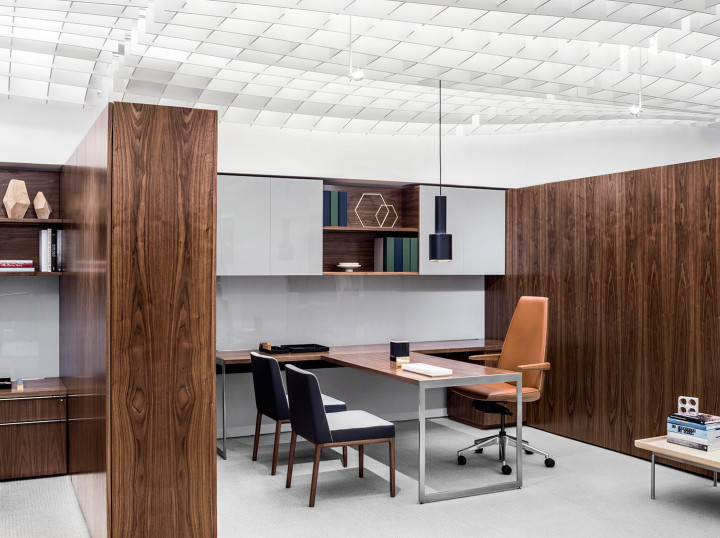
The table we kept thinking about long after our showroom tour was their Elsi table with the Forbo Desktop surface. The edge detail of this amazing table is elegant and quite unique in that it’s also the Forbo Desktop material. The table’s power module with the sliding door is a Geiger proprietary feature and a beautiful solution for power management.
The Saiba chair made a stunning debut in both a mid-back and high-back option. This beautifully-tailored and sophisticated piece is designed by Tokyo-based designer Naoto Fukasawa. The Saiba chair is small, but substantial, and is a great option for conferencing or small collaboration spaces.
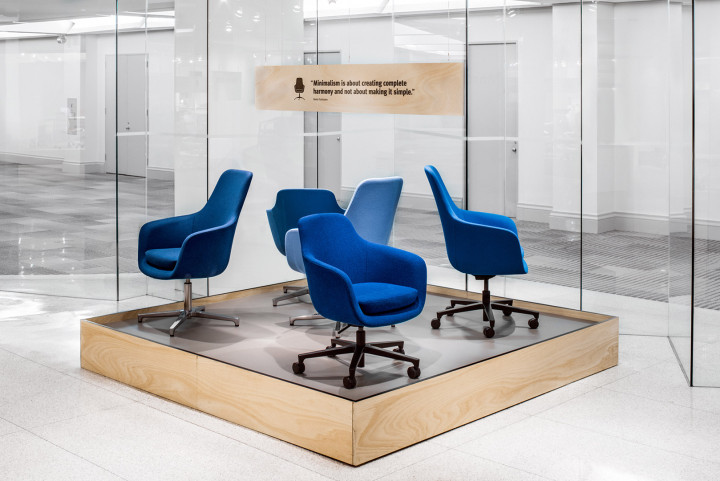
We loved the seating group featuring an extended Tuxedo Lounge and Crosshatch chairs: Crosshatch is one of our favorite chairs; the craftsmanship is on point.
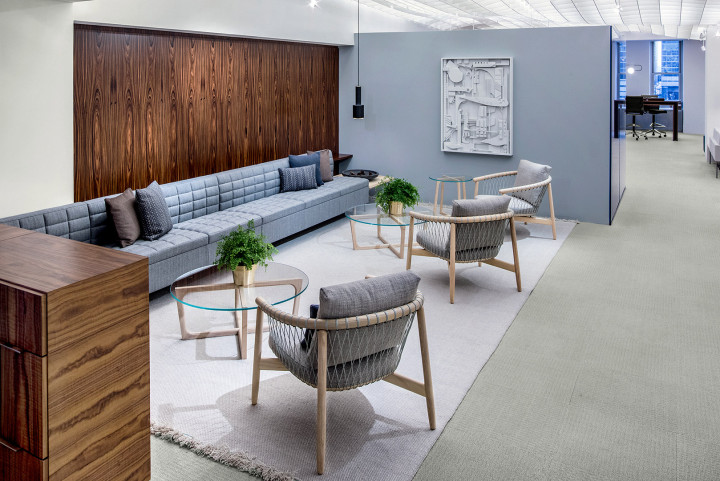
That craftsmanship, combined with the detail, color, and texture featured in both showrooms is what would stand out to us in any NeoCon tour, but what really struck us at Herman Miller and Geiger is the intent behind every new product: the needs of the individual user. Herman Miller and Geiger’s research into a purposeful workplace is evident in the Living Office settings and their new product lines, and already has us thinking of how we can utilize these tools in both current and future projects.

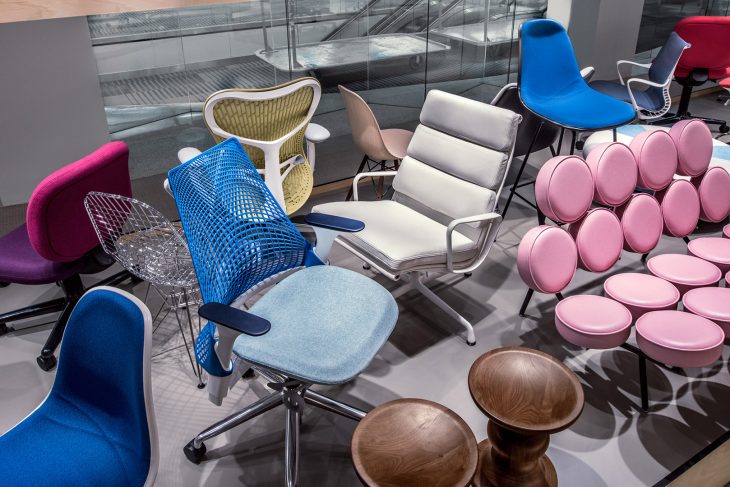

Do products and office types as promoted, satisfy ‘Wellness’ and C2C design concepts?